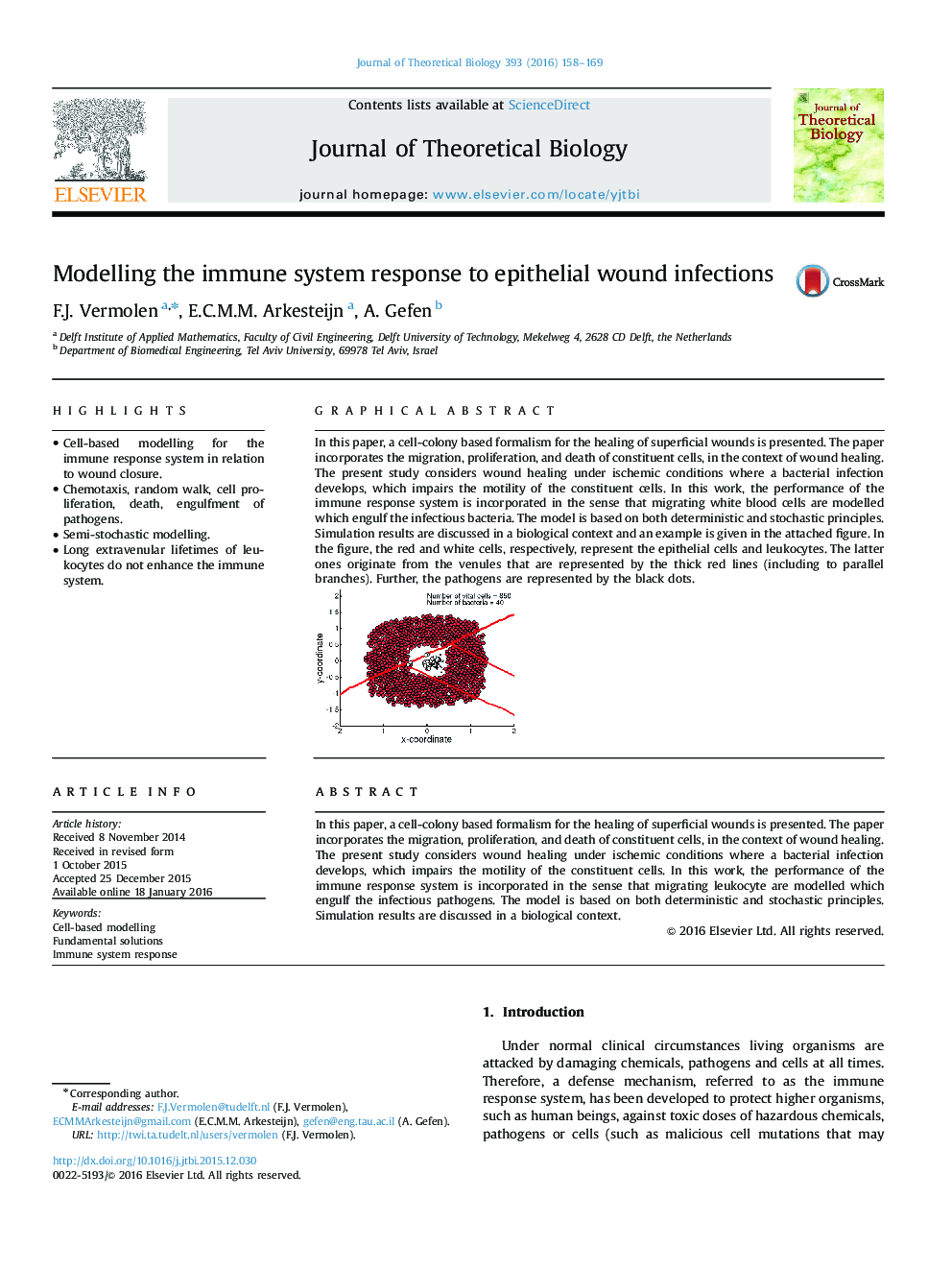| Article ID | Journal | Published Year | Pages | File Type |
|---|---|---|---|---|
| 4495872 | Journal of Theoretical Biology | 2016 | 12 Pages |
•Cell-based modelling for the immune response system in relation to wound closure.•Chemotaxis, random walk, cell proliferation, death, engulfment of pathogens.•Semi-stochastic modelling.•Long extravenular lifetimes of leukocytes do not enhance the immune system.
In this paper, a cell-colony based formalism for the healing of superficial wounds is presented. The paper incorporates the migration, proliferation, and death of constituent cells, in the context of wound healing. The present study considers wound healing under ischemic conditions where a bacterial infection develops, which impairs the motility of the constituent cells. In this work, the performance of the immune response system is incorporated in the sense that migrating leukocyte are modelled which engulf the infectious pathogens. The model is based on both deterministic and stochastic principles. Simulation results are discussed in a biological context.
Graphical abstractIn this paper, a cell-colony based formalism for the healing of superficial wounds is presented. The paper incorporates the migration, proliferation, and death of constituent cells, in the context of wound healing. The present study considers wound healing under ischemic conditions where a bacterial infection develops, which impairs the motility of the constituent cells. In this work, the performance of the immune response system is incorporated in the sense that migrating white blood cells are modelled which engulf the infectious bacteria. The model is based on both deterministic and stochastic principles. Simulation results are discussed in a biological context and an example is given in the attached figure. In the figure, the red and white cells, respectively, represent the epithelial cells and leukocytes. The latter ones originate from the venules that are represented by the thick red lines (including to parallel branches). Further, the pathogens are represented by the black dots.Figure optionsDownload full-size imageDownload as PowerPoint slide
